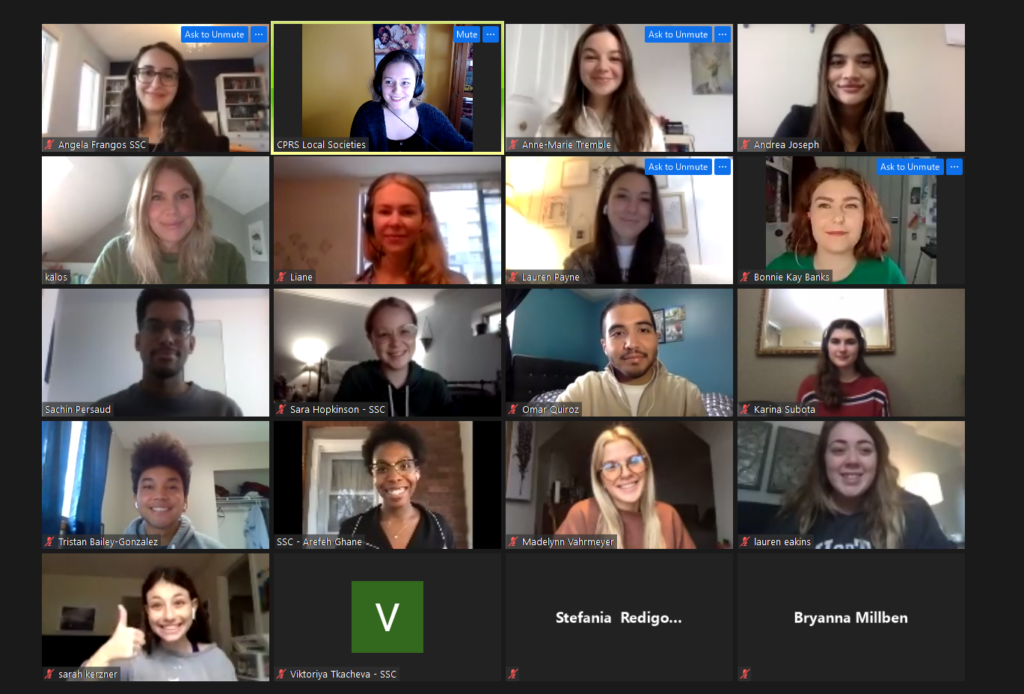Written by: Carolina Salinas, public relations and corporate communications graduate, Professional Development Inclusion & Equity Co-Chair, CPRS Toronto.
Are you curious about what the role of public relations is within libraries? We bring you part 2 of our series “The Role of Public Relations within GLAMs during the COVID-19 lockdown.” This time, we interviewed the Director of Communications, Programming and Customer Engagement at the Toronto Public Library.
Toronto Public Library (TPL)
Did you know that Toronto has the largest public library system in North America, with 100 branches, including two research and reference libraries, as well as one of the most used e-collection in the world? These libraries contain a wide range of material, such as books, magazines, digital archives, e-books, e-magazines and audiobooks, among other material. What you may find surprising in this digital era is that the libraries still receive over 18 million visitors each year.
Public relations role is crucial to promote a library’s content and services. In an interview with Linda Hazzan, Director of Communications, Programming & Customer Engagement for the Toronto Public Library, she mentioned that public relations play different roles within the library sector, depending on their needs.
“In our department, we have a few different functions. We have the traditional marketing communications roles, and we also have the equally important strategic communications and stakeholder relations roles, with the public relations function sitting within that division. This team really focuses on telling the library’s story proactively, as well as managing our communications reactively. Issues management, crisis communications and public and media relations all support our reactive and proactive communications.”
Hazzan added that TPL’s public relations role supports its marketing communications’ promotion, advertising and brand building.
“We build public relations into our marketing plans so that we can proactively reach out to influencers and other stakeholders who can tell our story and support our awareness-raising and promotion goals.”
Hazzan also mentioned that as a public institution, the public relations role within TPL is really about supporting their ability to be transparent and accountable.
“When I talk about telling our story, it is certainly about making people aware of who we are, what we do and why we matter; but it is also about making sure that we are held accountable to the people who we serve. This is important as a public sector organization. I also think that public relations can be used as an advocacy tool, which is a significant role for a library or public institution to play, particularly around funding and communicating organizational value. In a for-profit organization, public relations is often used to help generate revenue. For a public service organization, public relations helps us communicate the value we deliver to our constituents.”
TPL is a public institution that continues to offer its services to all Torontonians. Although TPL had to completely shut down its physical locations during the first lockdown due to the COVID-19 pandemic, its digital services continued operating, and are rapidly increasing in popularity and use.
When the first lockdown started in March 2020, TPL had to monitor regulations from the province to keep offering its services based on protocol measures and the health and safety of Torontonians. Over the summer and fall, as provincial regulations slowly lifted, TPL was able to reopen almost all of its 100 branches with modified services and maintaining strict conditions to avoid spreading of the virus.
According to Hazzan, the first lockdown was certainly a challenge to communicate all of TPL’s service changes. Despite conveying this information through digital channels, unfortunately, not everybody accessed this information ahead of time. As part of its communications strategy, the TPL made use of their physical channels, including staff, signage with partners and coordination with the City of Toronto to get their messages out. She added that internal communications had also been a key element in their ability to support effective communications with the public as well.
“As a library, we do emergency planning as a regular exercise, so when the pandemic hit, our emergency and business continuity planning was operationalized. This included standing up our Library Operations Centre, which coordinated our efforts City’s Emergency Operations Centre. This planning and coordination was critical to our success, and was invaluable to our information gathering, information sharing and ongoing communications with all of our stakeholders,” said Hazzan.
Managing disruptions, the unknown, and the ambiguity is something that everybody is currently dealing with due to the pandemic. As any organization, according to Hazzan, the key is doing as much planning as possible, keeping in mind the factor of change within the safe delivery of the TPL’s services, while also taking care of TPL staff.
















